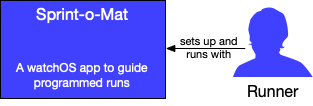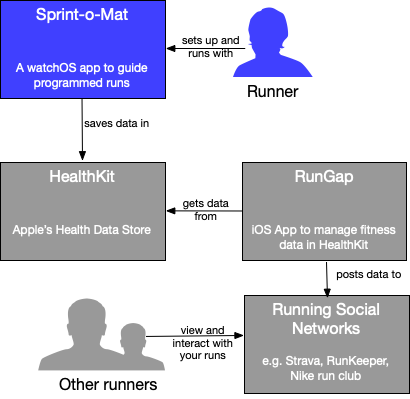In a C4 System Boundary diagram, you start by drawing a blue box in the center. That’s your system. And you draw some blue stick figures with arrows pointing at that box. Those are your users.

Every system in the world pretty much looks the same if you stop there. Put some words on the parts to make it more specific.

But this diagram is called a Context diagram for a reason. The most important part is not the system box (the three other types of C4 diagrams will elaborate on it), but the all of the gray boxes and stick figures you put around it.

These are the external pieces that are not the system and who are not your users. They are out-of-scope, but do a lot of work in the diagram to help describe the system.